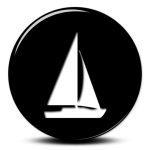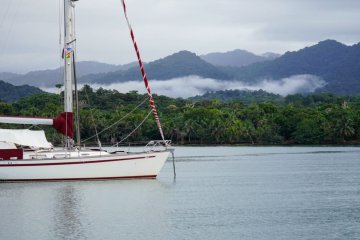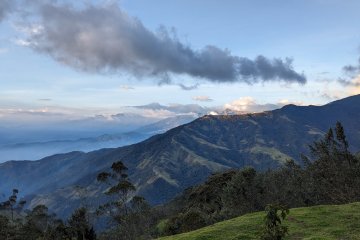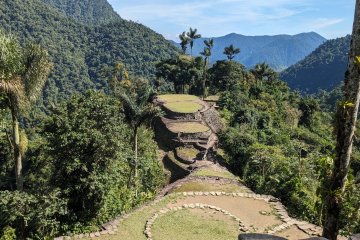After our epic road trip we were happy to be back again on Curacao and “Maya”.
Then the work begins – we had to take off the heavy winter tent and make the boat habitable again. Then we checked to see if we had any unwanted “friends” on the boat.
In fact, we found one dead cockroach on the kitchen shelf and killed another one.
Fortunately, this was the only time we saw them…hopefully!
The next two weeks Maya will still be on land and we spend most of the time with work in and under the boat.
First we have to remove the propeller as John had noticed that it was loose on the shaft – not a good situation.
After the propeller nut was firmly tightened the propeller body and blades had to be greased internally. (The propeller is a “folding” type and quite a complex mechanism)
Then the propeller has to be carefully re-assembled making sure that the correct blades are in the correct slots and aligned correctly.
This took two or three attempts and is quite tricky as you have to hold all the heavy parts in the right places.
Then John wasn’t sure he had set the propeller correctly, so off it came once more. Just as well as it wasn’t correct.
Finally it was back on and needed cleaning. Our Italian friends lend us a grinding machine with a steel brush with which I grind the propeller to remove the old anti-fouling. This is pretty hard work, especially since I have never done this before.
Next comes a primer on the propeller and finally the anti-fouling – Done!
On the hull, stubborn shells had to be removed with a putty knife before we could activate the Coppercoat anti-fouling with a sander. This has to be done every time the boat is out of the water for more than a couple of days and is hard work.
In the evening we fall into bed dead tired and our arms ache. In the heat we wear a complete overall as well as gloves and goggles to protect us from the toxic substances. Phew!
A new swivel has to be fitted to the forestay (this holds the sail up and allows it to furl away). This job is beyond us and we arrange for a rigger, Gijs, to come to do this.
The job involves climbing to the top of the mast and removing the forestay which is over 22m long and also holds the mast up! He is really quick and removes the forestay, fits the new swivel and re-fits the forestay in about 4 hours.
After almost 2 weeks we are ready and happy to get back into the water.
As soon as we are in the water John checks the engine room and finds salt water. The propeller shaft seal is leaking drip…drip…drip.
John fixes the leak temporarily with a clamp. A new shaft seal has to be ordered and we will have to go back into the crane for a few hours in 2 weeks.
Since we expect our friends on Bonaire in a week, we have no time now. But this is not the only leak. When we start the generator, we find out that a seal is leaking there as well and has to be replaced.
Luckily the helpful mechanic from the marina knows where we can get a new seal and John can install this. He buys four ready for when it happens again!
Then one last time shopping and one evening I cook for our Italian and Swedish friends.
We say “Farewell” and the next day we sail with rain and gray sky in the direction of Bonaire. The first miles behind Curacao we can sail, but then it is 8 hours long motoring and against the wind and in the metre high waves. After 3 hours I am completely seasick and very happy when we finally moor on a buoy in front of Bonaire.
The next day we spend checking-in to Bonaire. This has to be done at every new island/country and it usually happens without a problem.
The people here on Bonaire are much more relaxed and friendly than on Curacao. We liked Bonaire right away, it is manageable and the water is quite clear. Bonaire is only 40 km long and 5 – 12 km wide and belongs to the former Netherlands Antilles.
The capital Kralendijk you can still find the beautiful houses from the former Dutch colonial times. In the south of the island you can find the salt mines where salt is still extracted today. In colonial times, many African slaves were imported here and had to work under inhumane conditions to extract the salt. They slept in very small houses where only 6 people could lie. We explored the south with a scooter.
In the ice cream parlor “Gio” you get excellent ice cream and everything else is so wonderfully within walking distance.
We also do two small dives directly from the boat. Ideal for me as a beginner to expand my diving skills in peace. I also did a beginner course in wing foiling which I totally enjoyed. There is a beautiful lagoon with shallow water is just so picturesque and ideal for beginners.
With our friends Sabine & Matthias we drove in a rented 4WD pickup to the Washington National Park in the north of the island. An adventurous road led us over a rough cactus landscape with several smaller lagoons with flamingos to unique rocky landscapes. Snorkeling in the park was great, absolutely clear water and lots of fish.
After a few relaxing days we sailed with good wind back to Curacao and anchored there for one night in Fuik Baij. The next day we went back to Marine Cuaracao because Maya came back into the lift for a few hours and John could fortunately install the new shaft seal that had arrived in the marina in the meantime. I was lucky enough to go snorkeling with my friends at Tugboat beach before they left for Costa Rica the next day.



